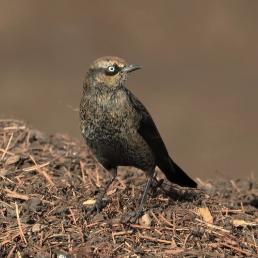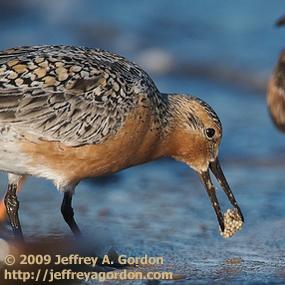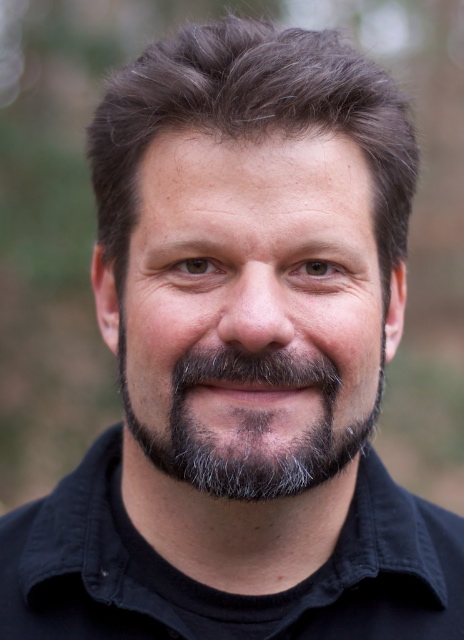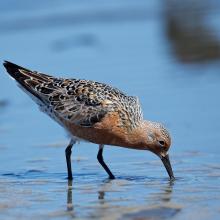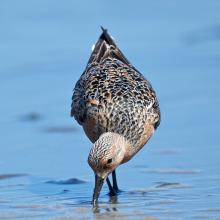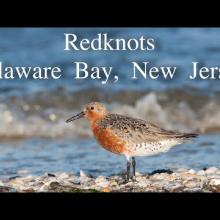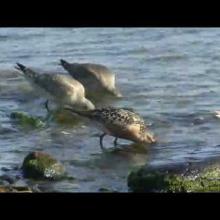

Join BirdNote tomorrow, November 30th!
Illustrator David Sibley and actor H. Jon Benjamin will face off in the bird illustration battle of the century during BirdNote's Year-end Celebration and Auction!
The Red Knot returns to the Delaware Bay each May to feed. These sandpipers are on their way to their nesting grounds in the northern Arctic and stop here to refuel - their stopover coincides with the spawning of horseshoe crabs. But beginning in the 1980s, vast numbers of the crabs were harvested to bait fishing traps. Red Knot populations plummeted by about 90%. American Bird Conservancy is working to help Red Knots. The Red Knot will soon be protected under the Endangered Species Act.
BirdNote®
Red Knots and Horseshoe Crabs
Written by Bob Sundstrom
This is BirdNote.
[Semipalmated Sandpipers]
Along the shores of the Delaware Bay, a relationship that has lasted for thousands of years is coming unraveled. Sandpipers return each May to feed, and their stopover coincides with the spawning of horseshoe crabs. The birds are on their way from South America to their nesting grounds in the northern Arctic. They depend upon an abundance of crab eggs laid along the shore to fuel their northward flight.
[Semipalmated Sandpipers + waves on shore]
One species of sandpiper, named the Red Knot for the coppery hue of its spring plumage, once concentrated along Delaware Bay in huge numbers – more than 100,000 strong. [Calls of Red Knots in the background] But beginning in the 1980s, vast numbers of horseshoe crabs were harvested to bait fishing traps. The results for Red Knots were disastrous. Their populations [in Delaware Bay] plummeted by about 90%.
[Waves]
Recent conservation rules have limited somewhat the plunder of horseshoe crabs, but Darin Schroeder of American Bird Conservancy says the “situation is dire … Unless drastic action is taken” this population of Red Knots “could become extinct in the next 10 years.” Schroeder believes the Red Knot can be saved, but only through Endangered Species protection. [Calls of Red Knots] The birds’ predicament illustrates the intricate links on which their lives depend.
If you’d like to help, begin at our website, birdnote.org.
###
Bird sounds provided by The Macaulay Library of Natural Sounds at the Cornell Lab of Ornithology, Ithaca, New York. Semi-Palmated Sandpiper 63779 by W.W. H. Gunn; Red Knot 137542 recorded by Gerrit Vyn.
Flock of Red Knots along Delaware Bay recorded by Martyn Stewart of naturesound.org
Producer: John Kessler
Executive Producer: Chris Peterson
© 2011 Tune In to Nature.org May 2011 Narrator: Michael Stein
ID# SotB-REKN-2011-05-09
